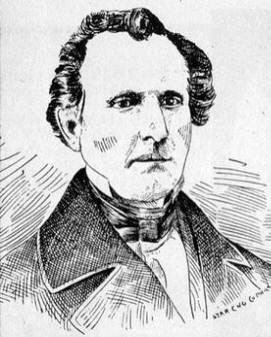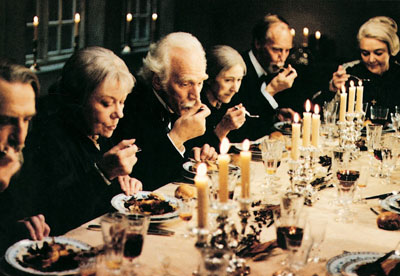
In the mid-1800s there was a group of people in America known as the Millerites–a Christian sect firmly convinced that Jesus would return sometime late in the year 1843. He didn’t, setting off what was called "the Great Disappointment."
At least some of these folks, however, made the best of the situation by declaring that as a matter of fact Jesus had returned but that it had turned out to be an invisible, spiritual advent. Believing themselves to be living in an already-present millennial kingdom, these Adventists decided that as part of this new identity they should invent alternative foods as a sign of their not being fully in this world.
One preacher named Sylvester Graham invented a new kind of cracker for his congregation to eat. Sylvester Graham (1794-1851) believed physical lust was harmful to the body and caused such dire maladies in the sexually overheated as pulmonary consumption, spinal diseases, epilepsy, and insanity, as well as such lesser ailments as headaches and indigestion. Graham believed a strict vegetarian diet would aid in suppressing carnal urges; to this end, he advocated a regimen devoid of meat and rich in fiber as a way of combating rampant desire.
His famed "Graham bread" was fashioned from the coarsely ground wheat flour he espoused and which came to bear his name. Convinced that eating meat and fat leads to sinful sexual excess, the good reverend urged total vegetarianism. He also warned that mustard and ketchup cause insanity, urged followers to drink only water, and recommended sleeping with one’s windows open regardless of the weather. More reasonably, he touted the merits of a high-fiber diet and promoted the use of homemade unsifted wheat flour instead of refined white flour.
Some sources assert Graham himself invented the snack in 1829; others claim the graham cracker did not come into being until 1882, 31 years after Graham’s death. Many bakers tried to market the crackers, but it wasn’t until 1898 that the National Biscuit Company (now Nabisco) made any real inroads into the market with their Nabisco Graham Crackers product. Nabisco achieved even greater success with their Honey Maid line, introduced in 1925, which boosted the original graham flavor through the addition of honey.
Today’s graham crackers are made with bleached white flour, a deviation that would have set Sylvester Graham to spinning in his grave — he regarded refined flour as one of the world’s great dietary evils.






 Tenth Sunday after Pentecost, July 28
Tenth Sunday after Pentecost, July 28
